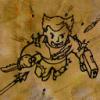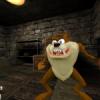Assuming that you know how many bones should be in the skeleton, and you have the bone hierarchy, is it possible to calculate the bind pose of the bones just based on the vertex weights?
To elaborate it a bit, let's say you have a skinned mesh, and each vertex of this mesh has 4 weights (at most). So you have 4 weight values and 4 bone ids for each vertex. Also let's say you have a skeleton with 10 bones, and all you have is the bone hierarchy. You need to position the bones to match the mesh (bind pose).
I am wondering if this can be done just using the weights/bone ids? I don't know how to approach this so any idea is appreciated.
Thank you.







